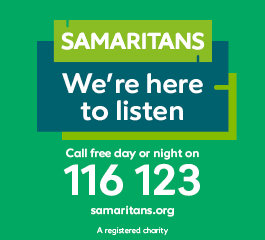Non-Violent Communication: making free choices in our actions
30 April 2021
Since Lockdown I’ve found that there have been subtle changes in the ways that I communicate. As I have spent much of my time communicating through a monitor, it feels as if I have lost many of the skills of face-to-face communication. I cannot know what the long-term impact of all of this will be.
However, what I do know is that communication is fundamental to my relationships with others and with myself. Although CBT can be a useful adjunct to improving communication, it is fundamentally a model about the ways that people ‘function’ rather than a set of teachable communication skills which can be of benefit to our mental health.
- See also: 'Undoing social anxiety with CBT'
- See also: 'Rules for living - what is Cognitive Behavioural Therapy?'
How to start to communicate with more compassion
It was with this in mind that I came across the work of Marshall Rosenberg. Although his book on Non-Violent Communication has sold millions across the world, he is relatively unknown in this country. Non-Violent Communication or NVC appears to be helpful in allowing us to communicate with ourselves and others, with more compassion. Rosenberg starts his book ‘Nonviolent Communication: A language of life’ by giving a description of what he means by violent communication
Violent communication aims at blaming and punishing. It is judgmental in nature focussing on what is wrong rather than what it ‘needed’. NVC is different in that it focuses on what is needed. Rosenberg understands how much our feelings our connected with our needs. If we are angry and start to make value judgements of others, he believes we are talking in coded ways about what we need.
When Sandra felt frustrated because her husband Jon never listened, she was expressing a ‘need’ to be understood by him
The concept of unmet needs is fundamental to our mental health. Jeffrey Young in his work on Schema Therapy suggested that people who are depressed through an early experience of emotional deprivation will dismiss their own needs and focus on the needs of others.
Four steps to get back on track with your communication
In order to get back on track and focus on our needs, Rosenberg outlines 4 steps. The first step which has some overlap with the ideas of CBT looks at focussing on making an objective description of what might be happening in a situation rather than making subjective evaluations.
The second step involves then identifying how we feel ‘emotionally’ about that situation. The third step involves stating what it is we ‘need’ at that point in time and the final step involves making a request from the other party for the need to be met.
In this respect, Rosenberg is careful in stressing the importance of knowing the difference between a request and a demand. When we demand something there is a suggestion that a punishment of some kind will follow if the demand is not met.
Punishment is violent communication in that it ‘takes us away’ from us what we ‘need’. It can mean doing something because we feel we ‘have to do it’ in order to escape punishment. NVC aims at moving away from this idea by focussing on making ‘free choices’ in our actions. Rosenberg understands that when we make a free choice, we stand a better chance of moving towards what we ‘need’.
NVC is not a therapy. It is an approach that has been used in many areas ranging from mediation work to conflict resolution. However, its focus on the skills of finding out what it is that people need is helpful particularly in the current climate. It is useful for therapists, the people who use therapy services and indeed society in general.
Want to read more of Michael's work? Buy his books ‘A Practical Guide to Working with Depression: A cognitive behavioural approach for mental health workers’ and ‘Working with Compassion’


Comments
Write a Comment
Comment Submitted